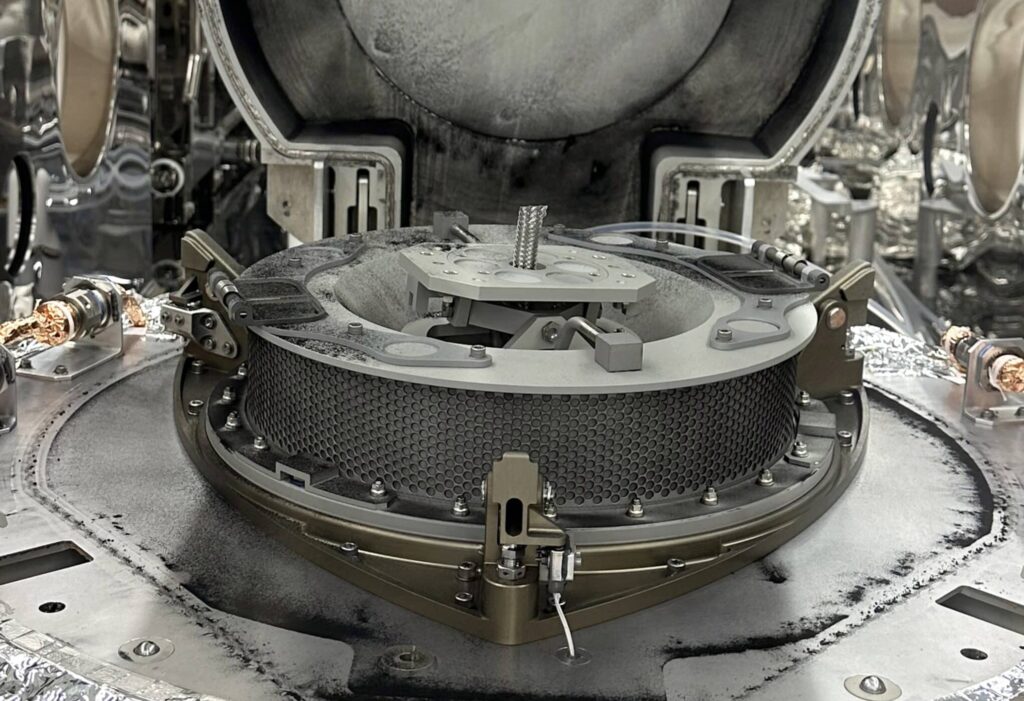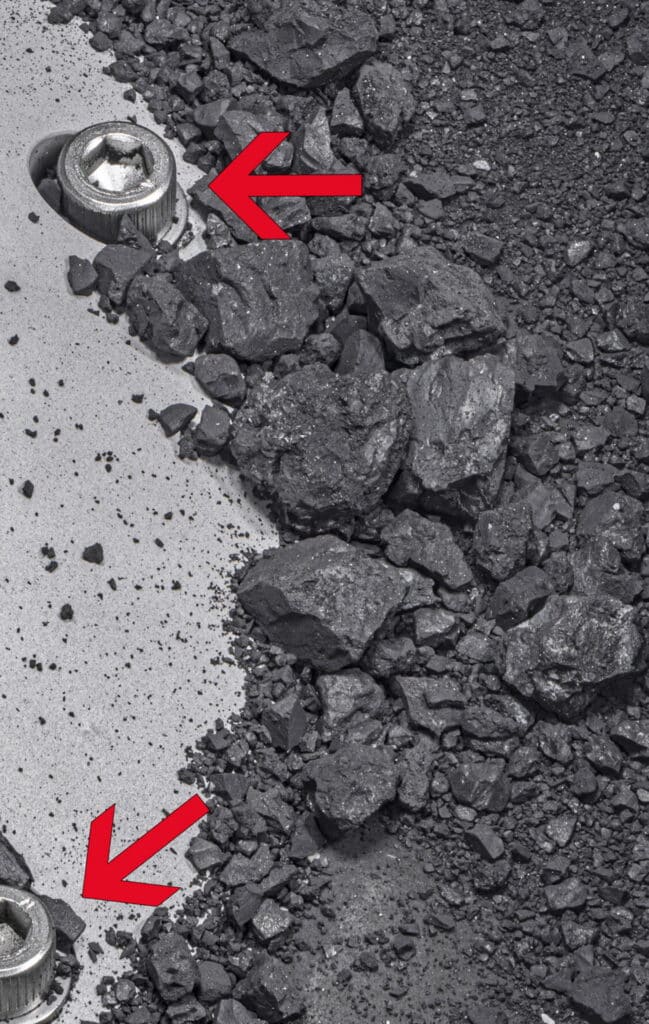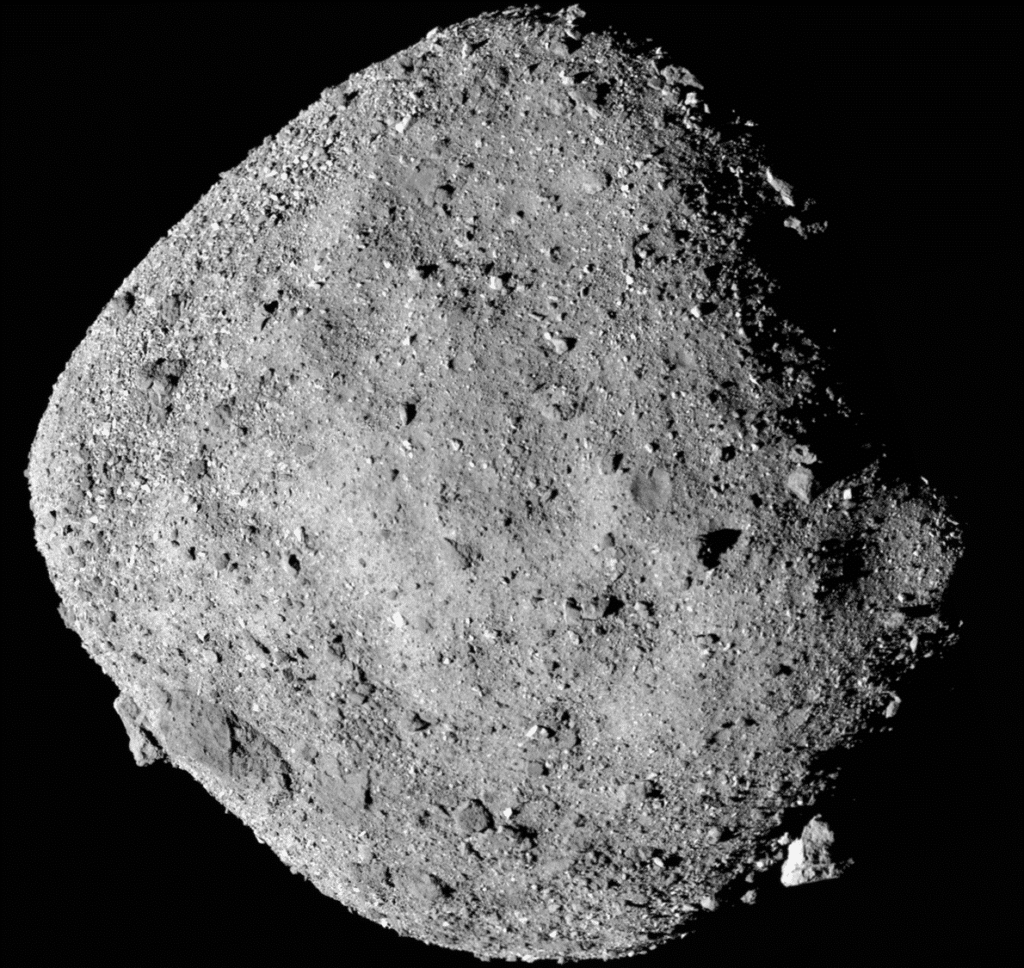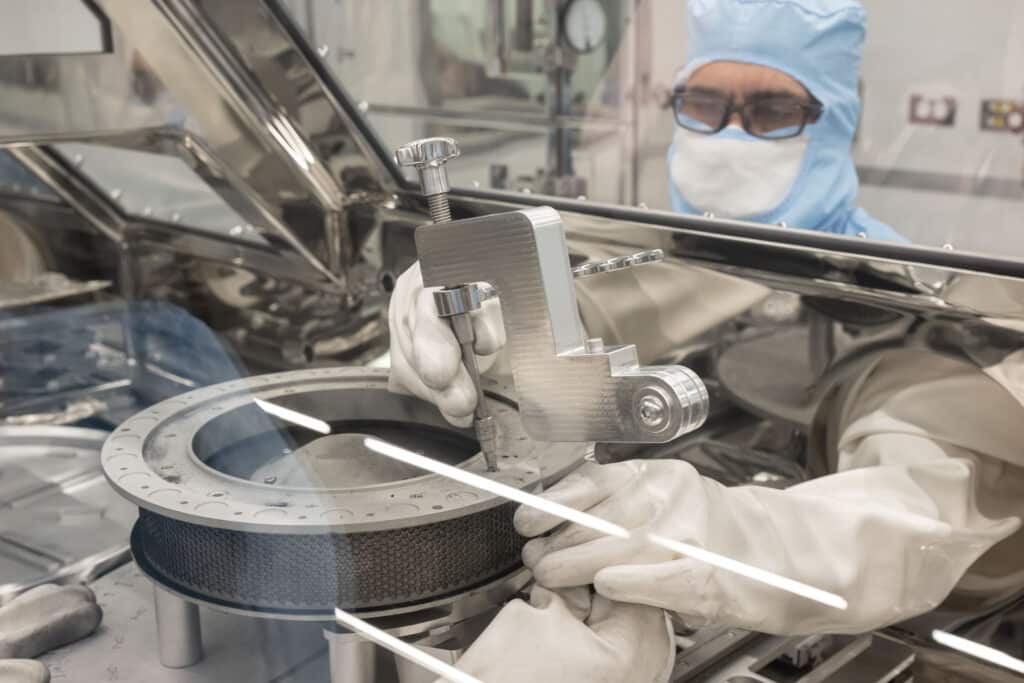They did it! After three months, NASA engineers finally removed two problematic fasteners from lid of the capsule containing samples taken from asteroid Bennu. Now scientists can finally inspect the prized acquisitions from the OSIRIS-REx, NASA’s first asteroid sample return mission.
The capsule delivered rocks and dust from Bennu, providing invaluable material for scientific research. The process of disassembling the Touch-and-Go Sample Acquisition Mechanism (TAGSAM) head is now underway, a crucial step in revealing the remaining sample.

Eileen Stansbery, the division chief for Astromaterials Research and Exploration Science (ARES) at Johnson, expressed her admiration for the team’s hard work and innovative approach. “Our engineers and scientists have worked tirelessly behind the scenes for months to not only process the more than 70 grams of material we were able to access previously, but also design, develop, and test new tools that allowed us to move past this hurdle,” she said in a statement.
The removal of the remaining sample will allow for a comprehensive analysis of the Bennu material. The team will take ultra-high-resolution images of the sample and then remove and weigh it to determine the total mass collected by the mission.

The challenge in accessing the sample arose in mid-October when the team discovered that two of the 35 fasteners on the TAGSAM head could not be removed with the existing tools. This led to the development of new, specialized tools made from a specific grade of surgical, non-magnetic stainless steel – the hardest metal approved for use in the pristine curation gloveboxes.
Dr. Nicole Lunning, OSIRIS-REx curator at Johnson, explained the complexity of the task, emphasizing the restrictions they faced in tool design due to the need to protect the scientific value of the asteroid sample. “The curation team showed impressive resilience and did incredible work to get these stubborn fasteners off the TAGSAM head so we can continue disassembly,” she said. “We are overjoyed with the success.”
Before successfully removing the fasteners, the team rigorously tested the new tools in a rehearsal lab, gradually increasing the assembly torque values to ensure the tools’ effectiveness and minimize the risk of damaging the TAGSAM head or contaminating the sample.

Despite earlier challenges in disassembling the TAGSAM head, the team had already secured 2.48 ounces (70.3 grams) of material, surpassing NASA’s goal of 60 grams. Some of this sample has been hermetically sealed for long-term preservation, with portions stored at ambient temperature and others at a frigid -112 Fahrenheit (-80 degrees Celsius).
In a significant step for the global scientific community, the curation team will release a catalog of the OSIRIS-REx samples later this spring, making them available for research worldwide. This achievement not only marks a triumph for the team at Johnson Space Center but also opens new avenues for understanding our solar system’s history and the mysteries of asteroid Bennu.












